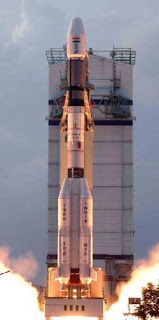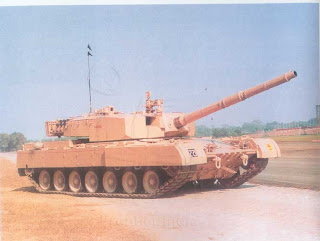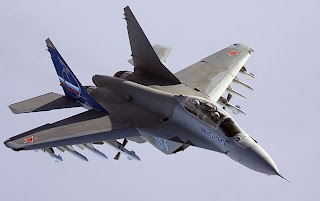Rich Barlow idles outside his silver trailer on a remote campsite in Montana - itinerant and unemployed, with only his hunting dogs and a borrowed computer for company. He dips into a pouch of American Spirit tobacco to roll another cigarette. It is hard to imagine that he was once a covert operative at the CIA, the recognised, much lauded expert in the trade in Weapons of Mass Destruction (WMD).He prepared briefs for Dick Cheney, when Cheney was at the Pentagon, for the upper echelons of the CIA and even for the Oval Office. But when he uncovered a political scandal - a conspiracy to enable a rogue nation to get the nuclear bomb - he found himself a marked man.
In the late 80s, in the course of tracking down smugglers of WMD components, Barlow uncovered reams of material that related to Pakistan. It was known the Islamic Republic had been covertly striving to acquire nuclear weapons since India's explosion of a device in 1974 and the prospect terrified the west - especially given the instability of a nation that had had three military coups in less than 30 years . Straddling deep ethnic, religious and political fault-lines, it was also a country regularly rocked by inter-communal violence. "Pakistan was the kind of place where technology could slip out of control," Barlow says.He soon discovered, however, that senior officials in government were taking quite the opposite view: they were breaking US and international non-proliferation protocols to shelter Pakistan's ambitions and even sell it banned WMD technology. In the closing years of the cold war, Pakistan was considered to have great strategic importance. It provided Washington with a springboard into neighbouring Afghanistan - a route for passing US weapons and cash to the mujahideen, who were battling to oust the Soviet army that had invaded in 1979. Barlow says, "We had to buddy-up to regimes we didn't see eye-to-eye with, but I could not believe we would actually give Pakistan the bomb.
How could any US administration set such short-term gains against the long-term safety of the world?" Next he discovered that the Pentagon was preparing to sell Pakistan jet fighters that could be used to drop a nuclear bomb.
Barlow was relentless in exposing what he saw as US complicity, and in the end he was sacked and smeared as disloyal, mad, a drunk and a philanderer. If he had been listened to, many believe Pakistan might never have got its nuclear bomb; south Asia might not have been pitched into three near-nuclear conflagrations; and the nuclear weapons programmes of Iran, Libya and North Korea - which British and American intelligence now acknowledge were all secretly enabled by Pakistan - would never have got off the ground. "None of this need have happened," Robert Gallucci, special adviser on WMD to both Clinton and George W Bush, told us. "The vanquishing of Barlow and the erasing of his case kicked off a chain of events that led to all the nuclear-tinged stand-offs we face today. Pakistan is the number one threat to the world, and if it all goes off - a nuclear bomb in a US or European city- I'm sure we will find ourselves looking in Pakistan's direction."
US aid to Pakistan tapered off when the Soviet Union withdrew from Afghanistan. Dejected and impoverished, in 1987 Pakistan's ruling military responded by selling its nuclear hardware and know-how for cash, something that would have been obvious to all if the intelligence had been properly analysed. "But the George HW Bush administration was not looking at Pakistan," Barlow says. "It had new crises to deal with in the Persian Gulf where Saddam Hussein had invaded Kuwait."
As the first Gulf war came to an end with no regime change in Iraq, a group of neoconservatives led by Paul Wolfowitz, Dick Cheney, Lewis "Scooter" Libby and Donald Rumsfeld were already lobbying to finish what that campaign had started and dislodge Saddam. Even as the CIA amassed evidence showing that Pakistan, a state that sponsored Islamist terrorism and made its money by selling proscribed WMD technology, was the number one threat, they earmarked Iraq as the chief target.
When these neocons came to power in 2001, under President George W Bush, Pakistan was indemnified again, this time in return for signing up to the "war on terror". Condoleezza Rice backed the line, as did Rumsfeld, too. Pakistan, although suspected by all of them to be at the epicentre of global instability, was hailed as a friend. All energies were devoted to building up the case against Iraq.
It is only now, amid the recriminations about the war in Iraq and reassessments of where the real danger lies, that Barlow - the despised bringer of bad news about Pakistan - is finally to get a hearing. More than 20 years after this saga began, his case, filed on Capitol Hill, is coming to court later this month. His lawyers are seeking millions of dollars in compensation for Barlow as well as the reinstatement of his $80,000 a year government pension. Evidence will highlight what happened when ideologues took control of intelligence in three separate US administrations - those of Reagan, and of the two Bushes - and how a CIA analyst who would not give up his pursuit for the truth became a fall guy.
At first Barlow thought he was helping safeguard the world. "I just loved it," he says. His focus from the start was Pakistan, at the time suspected of clandestinely seeking nuclear weapons in a programme initiated by Zulfikar Ali Bhutto, the father of Benazir. "Everywhere I looked I kept coming up against intelligence about Pakistan's WMD programme," Barlow says. "I thought I was telling them what they needed to hear, but the White House seemed oblivious." Immersed in the minutiae of his investigations, he didn't appreciate the bigger picture: that Pakistan had, within days of Reagan's inauguration in 1981, gone from being an outcast nation that had outraged the west by hanging Bhutto to a major US ally in the proxy war in Afghanistan.
Within months Barlow was out of a job. A small band of Republican hawks, including Paul Wolfowitz, had convinced the president that America needed a new strategy against potential nuclear threats, since long-term policies such as détente and containment were not working. Reagan was urged to remilitarise, launch his Star Wars programme and neutralise ACDA. When the agency's staff was cut by one third, Barlow found himself out of Washington and stacking shelves in a food store in Connecticut, where he married his girlfriend, Cindy. He was not on hand in 1984 when intelligence reached the ACDA and the CIA that Pakistan had joined the nuclear club (the declared nuclear powers were Britain, France, the US, China and Russia) after China detonated a device on Pakistan's behalf.
Soon after, Barlow was re-employed to work as an analyst, specialising in Pakistan, at the Office of Scientific and Weapons Research (OSWR). The CIA was pursuing the Pakistan programme vigorously even though Reagan was turning a blind eye - indeed, Reagan's secretary of state, George Schultz, claimed in 1985: "We have full faith in [Pakistan's] assurance that they will not make the bomb."
Back on a government salary, Barlow, aged 31, moved to Virginia with his wife Cindy, also a CIA agent. From day one, he was given access to the most highly classified material. He learned about the workings of the vast grey global market in dual-use components - the tools and equipment that could be put to use in a nuclear weapons programme but that could also be ascribed to other domestic purposes, making the trade in them hard to spot or regulate. "There was tonnes of it and most of it was ending up in Islamabad," he says. "Pakistan had a vast network of procurers, operating all over the world." A secret nuclear facility near Islamabad, known as the Khan Research Laboratories, was being fitted out with components imported from Europe and America "under the wire". But the CIA obtained photographs. Floor plans. Bomb designs. Sensors picked up evidence of high levels of enriched uranium in the air and in the dust clinging to the lorries plying the road to the laboratories. Barlow was in his element.
However, burrowing through cables and files, he began to realise that the State Department had intelligence it was not sharing - in particular the identities of key Pakistani procurement agents, who were active in the US. Without this information, the US Commerce Department (which approved export licences) and US Customs (which enforced them) were hamstrung.
Barlow came to the conclusion that a small group of senior officials was physically aiding the Pakistan programme. "They were issuing scores of approvals for the Pakistan embassy in Washington to export hi-tech equipment that was critical for their nuclear bomb programme and that the US Commerce Department had refused to license," he says. Dismayed, he approached his boss at the CIA, Richard Kerr, the deputy director for intelligence, who summoned senior State Department officials to a meeting at CIA headquarters in Langley. Barlow recalls: "Kerr tried to do it as nicely as he could. He said he understood the State Department had to keep Pakistan on side - the State Department guaranteed it would stop working against us."
.....
.....
(read more) 













